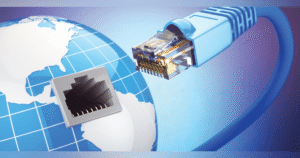An architecture course in the Philippines no longer focuses solely on manual drafting and physical models. The shift toward digital tools has redefined how students learn, design, and collaborate. Courses are evolving to reflect advancements in technology, global standards, and industry practices. Digital proficiency, sustainability, and practical experience are now key components of modern programs. Understanding how this transformation affects the quality of education helps students make better-informed decisions about their academic path and future career in the architectural field.
Changing Focus: The Evolution of Architecture Education
The Move from Manual Drafting to Digital Design
Traditional architecture training emphasized hand-drawn plans, physical model building, and on-paper technical drawings. While these techniques are still taught, digital drafting and design software now take center stage. Computer-aided design (CAD) and 3D modeling applications are core components of education today. These platforms increase accuracy, reduce errors, and allow faster revisions. Digital design also encourages experimentation, as students can quickly test different forms and ideas. Learning digital tools equips future professionals with design workflows aligned with industry standards.
Updated Curriculum to Match Industry Needs
Architecture schools are revising their curriculum to meet current professional demands. Core subjects still cover design principles and structural understanding, but there is greater emphasis on sustainability, urban development, and construction innovations. Updated programs include interdisciplinary projects that mirror real-world scenarios, encouraging collaboration with peers in engineering, planning, or interior design. These changes foster critical thinking and enhance problem-solving abilities. A curriculum that reflects evolving industry standards ensures students acquire relevant skills and stay competitive in the workforce.
New Teaching Approaches and Learning Platforms
Educators are adopting strategies that better match student learning styles. Instead of relying solely on lectures, programs now use project-based learning, digital critiques, and instant feedback systems. Online platforms enable students to submit work, collaborate remotely, and engage with peers and instructors. Virtual workshops, webinars, and access to digital libraries expand educational resources. This combination of online and offline learning enhances flexibility, supports independent study, and fosters creativity. These updated teaching methods help students build lasting skills that reflect how the profession operates today.
Digital Skills Now Taught in Architecture Programs
Design Software and 3D Modeling Tools
Students are now trained to use professional software tools such as CAD, Rhino, and SketchUp. These platforms allow the creation of detailed designs, plans, and realistic renderings. Proficiency in these tools improves accuracy and design quality while enabling efficient workflows. Learners also become familiar with digital documentation, data organization, and presentation formats. Through repeated use, students develop the ability to translate complex ideas into polished visual outputs, a crucial skill in the design and construction industries.
Building Information Modeling (BIM) Integration
Building Information Modeling (BIM) has become essential to architectural training. It supports collaboration and enables the simulation of building projects with integrated systems. Students use BIM to analyze materials, plan sequences, and track structural components. This approach improves coordination and accuracy, reducing delays and miscommunication in actual builds. Exposure to BIM prepares students for collaborative design processes and strengthens their value in the job market, where proficiency in this system is increasingly expected by employers.
Virtual Reality and Visualization Techniques
Architecture students now use virtual reality (VR) and advanced visualization tools to enhance design presentations. These technologies allow for immersive, interactive experiences where viewers can walk through a space before it is built. VR tools sharpen students’ spatial awareness and communication skills. Creating interactive simulations helps assess design efficiency, lighting, and movement within a structure. Visualization tools also improve client communication and stakeholder engagement, setting students apart with highly developed presentation capabilities.
Benefits of a More Modern Architecture Course in the Philippines
Better Project Output and Efficiency
Digital tools streamline the design process and minimize manual errors. Software can automate technical aspects like rendering and scaling, freeing students to focus on design quality. With more time for creative development, learners produce higher-quality outputs. A modern program in architecture encourages faster revisions, easier collaboration, and clearer documentation. The increased efficiency supports both academic success and readiness for industry challenges, helping learners establish a productive design process.
Stronger Career Opportunities After Graduation
Modern training gives graduates a competitive edge by developing in-demand digital skills. Familiarity with BIM, 3D software, and visualization tools enhances employability. A forward-thinking program reflects what employers currently expect from candidates, including fluency in software and experience with virtual collaboration. This prepares students for traditional and remote roles alike, opening doors in urban planning, construction technology, and digital design consulting. Solid technical training also empowers graduates to pursue freelance or international opportunities.
Global Readiness and Industry Relevance
Education aligned with international practices produces globally competent professionals. Updated architecture programs include exposure to smart city planning, environmental strategies, and digital workflows. These features help graduates meet international licensing standards and work in diverse teams. A globally conscious architecture course in the Philippines supports readiness for complex, real-world challenges. Learners benefit from insights into sustainable design, cross-cultural collaboration, and emerging trends shaping the future of architecture.
Challenges in Updating Architecture Education
Access to Technology and Equipment
Modern architecture programs rely on access to high-performance equipment and reliable internet. Some students may struggle to meet hardware requirements or afford expensive software. Schools can close this gap through computer labs, equipment rentals, or free access to platforms. Ensuring students have the necessary tools supports equal learning opportunities. Without adequate access, learners risk falling behind or missing vital digital training that is essential for program success.
Training Faculty for Modern Tools
Instructors must receive training to effectively teach new platforms and technologies. Many educators have backgrounds in traditional design methods and require updated knowledge to handle modern software. Schools should prioritize continuous development, including workshops, certifications, and hands-on experience. Faculty confidence directly affects student learning outcomes. When instructors master the latest tools, students gain reliable guidance and better preparation for the evolving demands of professional design work.
Balancing Old Foundations with New Methods
While technology enhances education, foundational skills remain essential. Hand drawing, physical modeling, and historical study shape design thinking. A thoughtful balance preserves creativity and fosters a deeper understanding of architectural form. Programs that combine analog and digital instruction cultivate well-rounded graduates. An architecture course in the Philippines that maintains this balance helps learners build technical skill while nurturing artistic judgment and design sensitivity.
What Future Students Should Look For in a Modern Architecture Program
Updated Facilities and Equipment
Modern educational spaces must support hands-on and digital learning. Design studios, computer labs, and access to tools like 3D printers or VR gear enrich student experiences. Exposure to current technology promotes innovation and real-world preparedness. A well-equipped architecture course in the Philippines enables students to practice with industry-standard tools and workflows. Assessing facilities is an important part of choosing the right academic environment.
Industry-Aligned Curriculum
Program content should reflect real-world expectations. A curriculum built around green building practices, smart technologies, and project-based learning better prepares students for career demands. Practical components like case studies and interdisciplinary collaboration strengthen critical thinking. An architecture course in the Philippines with a relevant curriculum fosters competence, adaptability, and long-term success in a dynamic field.
Opportunities for Digital Practice and Collaboration
Collaborative digital projects build technical fluency and communication skills. Programs should include internships, design competitions, and group assignments using virtual platforms. These opportunities simulate professional settings and foster teamwork. An architecture course in the Philippines that encourages hands-on digital practice prepares learners for real-world challenges. Active participation in collaborative tasks promotes readiness for a tech-driven and interconnected profession.
Key Takeaway
Architecture education is undergoing a transformation that blends tradition with technology. A modern architecture course in the Philippines equips students with essential digital skills, design thinking, and global awareness. Shifts in teaching methods, curriculum, and learning environments reflect the realities of today’s design world. These changes improve job readiness, support creative growth, and open new professional pathways. As architecture continues to evolve, education must keep pace. Choosing a future-focused program ensures that aspiring architects are prepared for both local and international challenges in a digitally driven industry.
- From Drafting Tables to Digital Tools: How Architecture Course in the Philippines Is Evolving
- A modern architecture course in the Philippines equips students with essential digital skills, design thinking, and global awareness.
- architecture course in the philippines
Related posts:
 Engineering Design Assignment Help: Making Complex Projects Easier for Students
Engineering Design Assignment Help: Making Complex Projects Easier for Students
 Turnitin Reports Made Easy with Political Science Solution’s Research Guide
Turnitin Reports Made Easy with Political Science Solution’s Research Guide
 How COVID-19 Changed The Classroom Tech Adoption in Pakistan
How COVID-19 Changed The Classroom Tech Adoption in Pakistan
 Best NDA Coaching Institute Kanpur NDA Coaching Institute Kanpur -La Militaire Academy
Best NDA Coaching Institute Kanpur NDA Coaching Institute Kanpur -La Militaire Academy
 ICFM Stock Market Classes Offer Practical Trading Education, Real-Time Learning, Expert Mentorship
ICFM Stock Market Classes Offer Practical Trading Education, Real-Time Learning, Expert Mentorship
 ICFM stock market classes empower your future with proven strategies
ICFM stock market classes empower your future with proven strategies
 Law Assignment Help Services for Australia Students Online !
Law Assignment Help Services for Australia Students Online !







